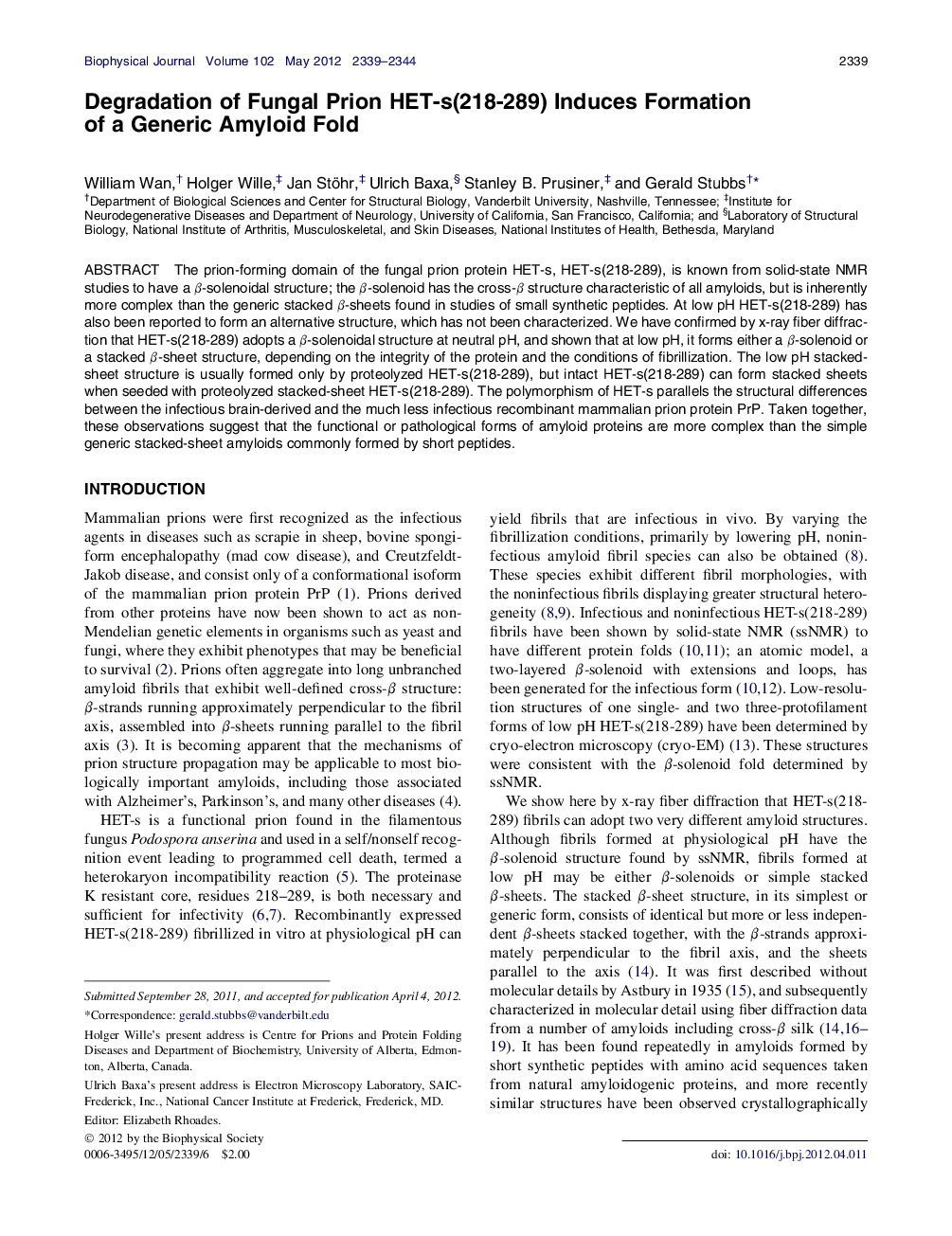| Article ID | Journal | Published Year | Pages | File Type |
|---|---|---|---|---|
| 1954551 | Biophysical Journal | 2012 | 6 Pages |
The prion-forming domain of the fungal prion protein HET-s, HET-s(218-289), is known from solid-state NMR studies to have a β-solenoidal structure; the β-solenoid has the cross-β structure characteristic of all amyloids, but is inherently more complex than the generic stacked β-sheets found in studies of small synthetic peptides. At low pH HET-s(218-289) has also been reported to form an alternative structure, which has not been characterized. We have confirmed by x-ray fiber diffraction that HET-s(218-289) adopts a β-solenoidal structure at neutral pH, and shown that at low pH, it forms either a β-solenoid or a stacked β-sheet structure, depending on the integrity of the protein and the conditions of fibrillization. The low pH stacked-sheet structure is usually formed only by proteolyzed HET-s(218-289), but intact HET-s(218-289) can form stacked sheets when seeded with proteolyzed stacked-sheet HET-s(218-289). The polymorphism of HET-s parallels the structural differences between the infectious brain-derived and the much less infectious recombinant mammalian prion protein PrP. Taken together, these observations suggest that the functional or pathological forms of amyloid proteins are more complex than the simple generic stacked-sheet amyloids commonly formed by short peptides.
